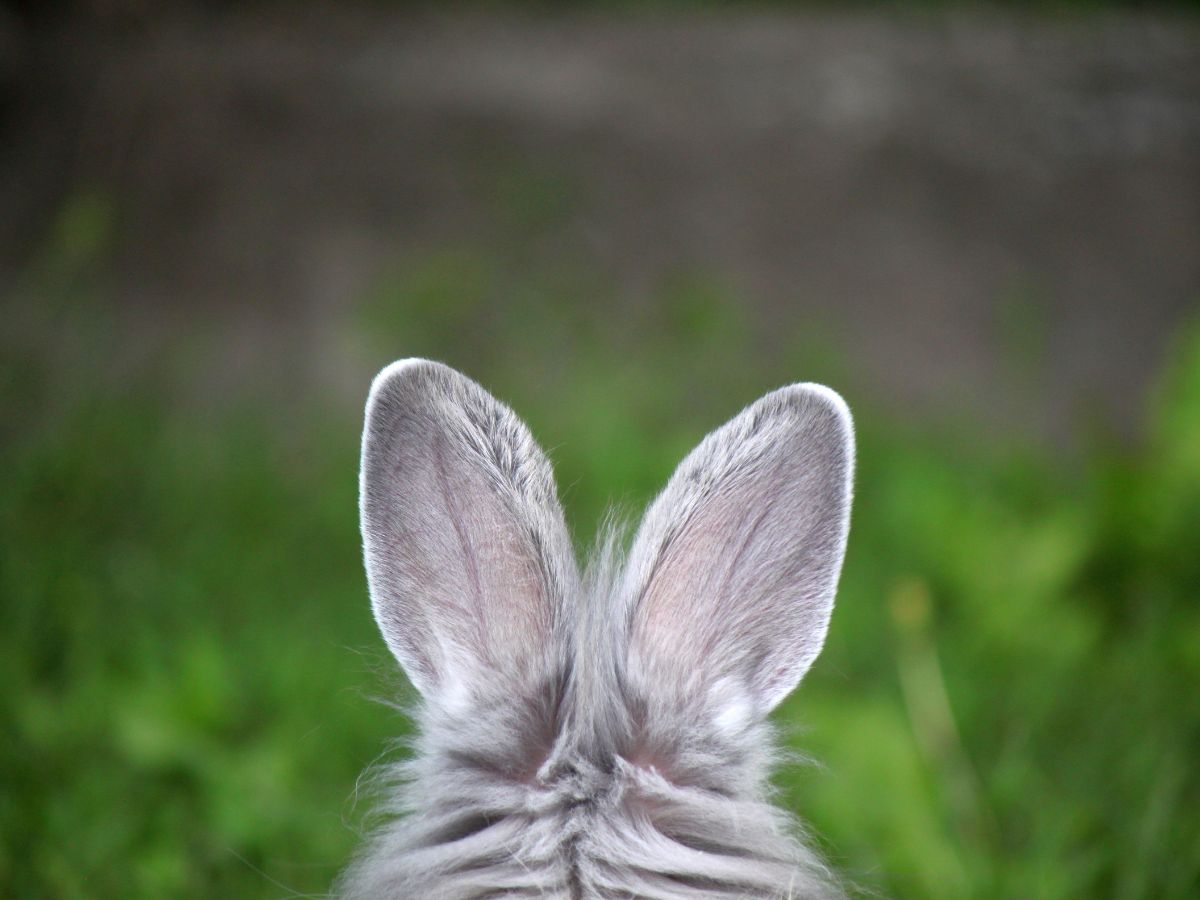When you look at your rabbit, you quickly notice their big ears! How well can rabbits perceive with them and do they hear better than humans?
Rabbits are particularly good at hearing high-pitched sounds, but not so good at hearing low-pitched sounds. Rabbits hear in a frequency range from 96 Hz to 49,000 Hz, while humans hear only between 20 and 20,000 Hz. Rabbits hear sounds between 1,000 and 16,000 Hz best.
They can even hear sounds from 1.8 miles (2.5 km) away!
Contents
Why do rabbits hear so well?
Rabbits’ good hearing and long ears have evolved to help them hear predators and escape from them. In the wild, rabbits spend their entire lives listening for every single sound.
Even as pets, they have retained their sensitive hearing and it is still one of their most important senses for detecting danger. Through his hearing, your rabbit knows who is home and where you are in the house.
Your rabbit also remembers your voice and can recognize it when you talk to it without your rabbit seeing you.
Rabbits can hear in a range of 96 Hz to 49,000 Hz, and they hear sounds that are between 1,000 and 16,000 Hz best.
Some breeds of rabbits with floppy ears tend to have worse hearing than other rabbits, but they still hear better than humans.
Rabbit hearing vs. human hearing
Compared to human hearing, rabbits can perceive especially higher pitched sounds much better than we can. They even hear sounds that are not even perceptible to us.
Humans hear a frequency range between 64 Hz and 23,000 Hz, and thus we can hear lower tones than rabbits. However, the sense of hearing in humans also changes greatly with age. When we are young, we can still hear much higher tones; we lose this ability as we age.
The rule of thumb for hearing for humans is:
- under 50 years: can hear up to 12,000 Hz
- under 40 years: can hear up to 15,000 Hz
- under 30 years: can hear up to 16,000 Hz
- under 24 years: can hear up to 17,000 Hz
How are rabbit ears structured?
The fact that rabbits can hear so well is due to both the external and internal structure of their ears.
The auricles are cup-shaped, allowing them to capture sound and direct it into the ear canal in a focused manner, much like satellite dishes.
In comparison, human ears are much smaller and fit snugly against our heads.
The mobility of rabbits’ ears allows them to direct them toward a sound and thus locate it precisely. Additionally, they can also move their ears independently and rotate them up to 270° to follow two sounds at the same time.
Rabbits with lop ears, such as Dwarf Ram rabbits and Mini Lop often hear much less or are even completely deaf. Their floppy ears also make the ear canal crook, allowing much less sound to reach the eardrum.
Another problem with Lop-eared rabbits is that the earwax cannot drain properly due to the crook in the ear canal, and they are significantly more likely to be affected by ear infections.
Can rabbits hear ultrasound?
Frequencies above 20,000 Hz are classified as ultrasound and rabbits can also hear this range. Because of this, devices that emit ultrasound, usually in the frequency range between 30,000 and 62,000 Hz, are often used for rodent repellent.
Such devices should not be kept near rabbits, as they can hear the sounds. At best, it only frightens them; at worst, they suffer pain or it permanently damages their inner ears.
For humans, the ultrasonic range is no longer audible.
How far away can rabbits hear?
Rabbits can hear sounds from a distance of up to 1.8 miles (2.5 km). Depending on the frequency, this radius can change.
Low frequencies tend to spread much farther than higher frequencies. Thus, rabbits can hear low-pitched sounds farther than 1.8 miles (2.5 km) away.
Fun Facts about Rabbit Ears:
1. Rabbits cool themselves with their ears.
When rabbits get too hot, the blood vessels in their ears swell, cooling their body temperature.
2. Baby rabbits are born deaf.
Baby rabbits are born deaf, blind and without fur. From the 7th day, baby rabbits can then slowly hear.
3. Rabbits with their ears.
Rabbits use their ears to tell their fellow rabbits, as well as humans, how they are doing and what emotions they are feeling. For example, if your rabbit’s ears are flat and his body is tense, he may be excited or frightened.
Signs that your rabbit is deaf
Especially in Lop-eared rabbits, the unnatural drooping ears quickly lead to complications and decreased hearing. You can recognize that your rabbit is deaf or hard of hearing by the following signs:
- Your rabbit does not respond to loud, sudden noises.
- Your rabbit’s ears do not move independently from each other.
- Your rabbit does not respond to the rustling of food.
- Your rabbit is startled when you suddenly come into view, even though he could have heard you before.
If you suspect that your rabbit is deaf or losing his hearing, you should definitely take him to the vet.
Conclusion
A rabbit’s hearing is one of their most important senses and it is needed every second of the day. Basically, rabbits can hear much better than humans, especially in the high frequency ranges.




